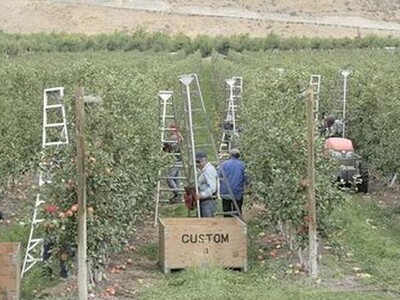Overwintering Bees
Overwintering Bees. I'm Greg Martin with today's Fruit Grower Report.When my son was small he once asked me where did the bees go in the winter. Usually bees in colder climates are moved into warmer climates during the winter months but recently that has resulted in large losses of bees to the colony collapse disorder. Steve Sheppard of Washington State University says now bee keepers are looking at using large climate controlled buildings used for apple storage to overwinter the bees.
SHEPPARD: These large chambers were designed for controlling or monitoring the oxygen and carbon dioxide levels. We were able to do that and have some data on this. And this is what led to the idea to do some additional research.
Overwintering of honeybee colonies indoors is not a new thing.
SHEPPARD: This indoor wintering has been practiced predominately in places like Canada where they have tremendously cold winters so instead of leaving them outside where it's 30 below they put them inside big sheds and keep it about 35 degrees so they don't need so they don't need so much honey to make it through the winter.
Bees use the honey as a fuel source to stay warm and the inside of hives tends to be fairly warm.
SHEPPARD: If we can come up with ways where they can put them in storage facilities, maintain them basically without dying off so rapidly, let's just say slowing down the aging process of the workers that are in there and then at the time that they actually need to be put in the orchards in California, put them on trucks and move them down there it'll be a great benefit.
That's today's Fruit Grower Report. I'm Greg Martin on the Ag Information Network of the West.


















